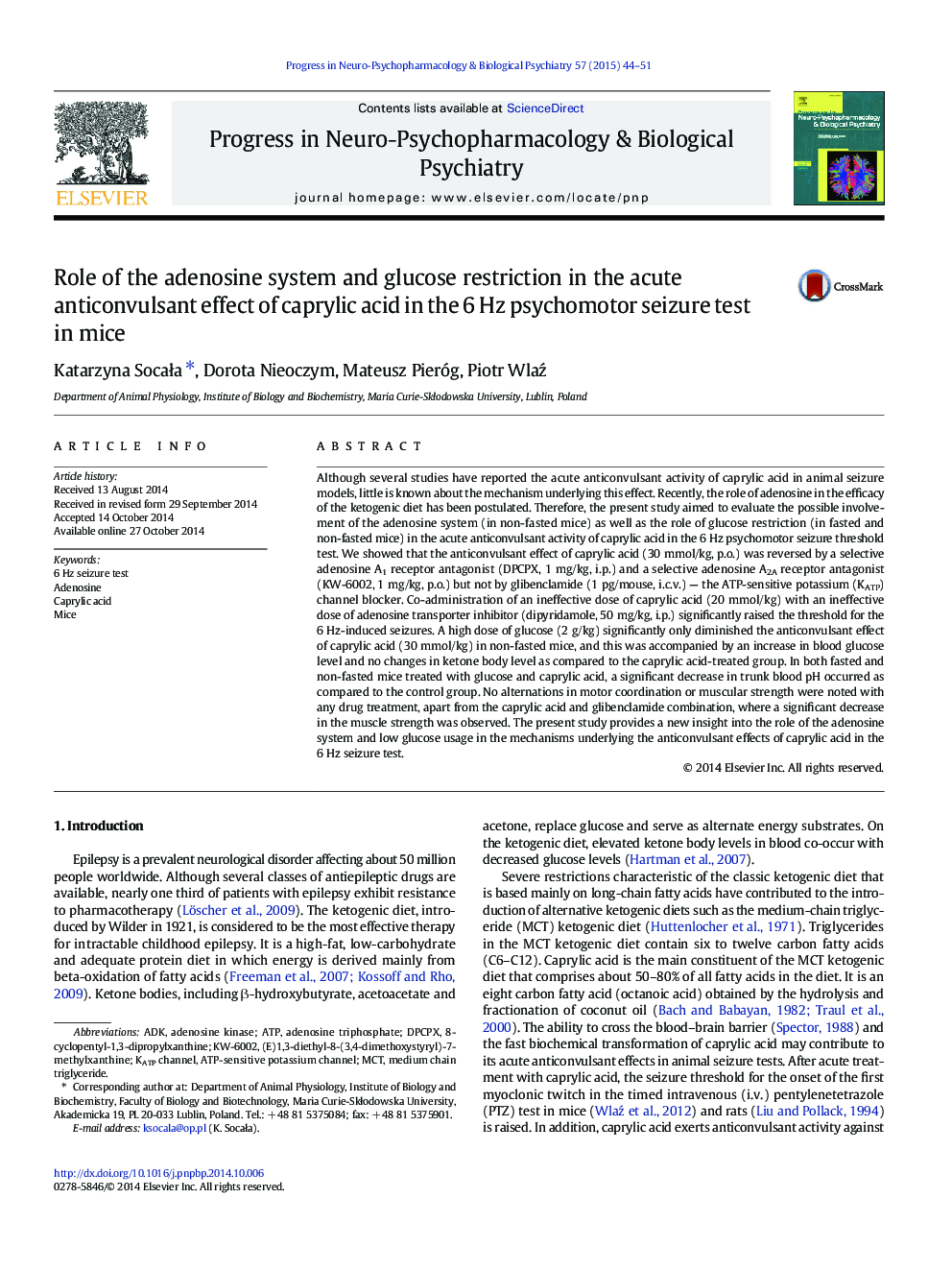| کد مقاله | کد نشریه | سال انتشار | مقاله انگلیسی | نسخه تمام متن |
|---|---|---|---|---|
| 2564769 | 1561037 | 2015 | 8 صفحه PDF | دانلود رایگان |

• DPCPX and KW-6002 reversed the acute anticonvulsant effect of caprylic acid.
• Dipyridamole enhanced the acute anticonvulsant effect of caprylic acid.
• Glibenclamide did not affect the activity of caprylic acid.
• Glucose abolished the anticonvulsant effect of caprylic acid in non-fasted mice.
• Glucose did not affect the anticonvulsant effect of caprylic acid in fasted mice.
Although several studies have reported the acute anticonvulsant activity of caprylic acid in animal seizure models, little is known about the mechanism underlying this effect. Recently, the role of adenosine in the efficacy of the ketogenic diet has been postulated. Therefore, the present study aimed to evaluate the possible involvement of the adenosine system (in non-fasted mice) as well as the role of glucose restriction (in fasted and non-fasted mice) in the acute anticonvulsant activity of caprylic acid in the 6 Hz psychomotor seizure threshold test. We showed that the anticonvulsant effect of caprylic acid (30 mmol/kg, p.o.) was reversed by a selective adenosine A1 receptor antagonist (DPCPX, 1 mg/kg, i.p.) and a selective adenosine A2A receptor antagonist (KW-6002, 1 mg/kg, p.o.) but not by glibenclamide (1 pg/mouse, i.c.v.) — the ATP-sensitive potassium (KATP) channel blocker. Co-administration of an ineffective dose of caprylic acid (20 mmol/kg) with an ineffective dose of adenosine transporter inhibitor (dipyridamole, 50 mg/kg, i.p.) significantly raised the threshold for the 6 Hz-induced seizures. A high dose of glucose (2 g/kg) significantly only diminished the anticonvulsant effect of caprylic acid (30 mmol/kg) in non-fasted mice, and this was accompanied by an increase in blood glucose level and no changes in ketone body level as compared to the caprylic acid-treated group. In both fasted and non-fasted mice treated with glucose and caprylic acid, a significant decrease in trunk blood pH occurred as compared to the control group. No alternations in motor coordination or muscular strength were noted with any drug treatment, apart from the caprylic acid and glibenclamide combination, where a significant decrease in the muscle strength was observed. The present study provides a new insight into the role of the adenosine system and low glucose usage in the mechanisms underlying the anticonvulsant effects of caprylic acid in the 6 Hz seizure test.
Figure optionsDownload as PowerPoint slide
Journal: Progress in Neuro-Psychopharmacology and Biological Psychiatry - Volume 57, 3 March 2015, Pages 44–51